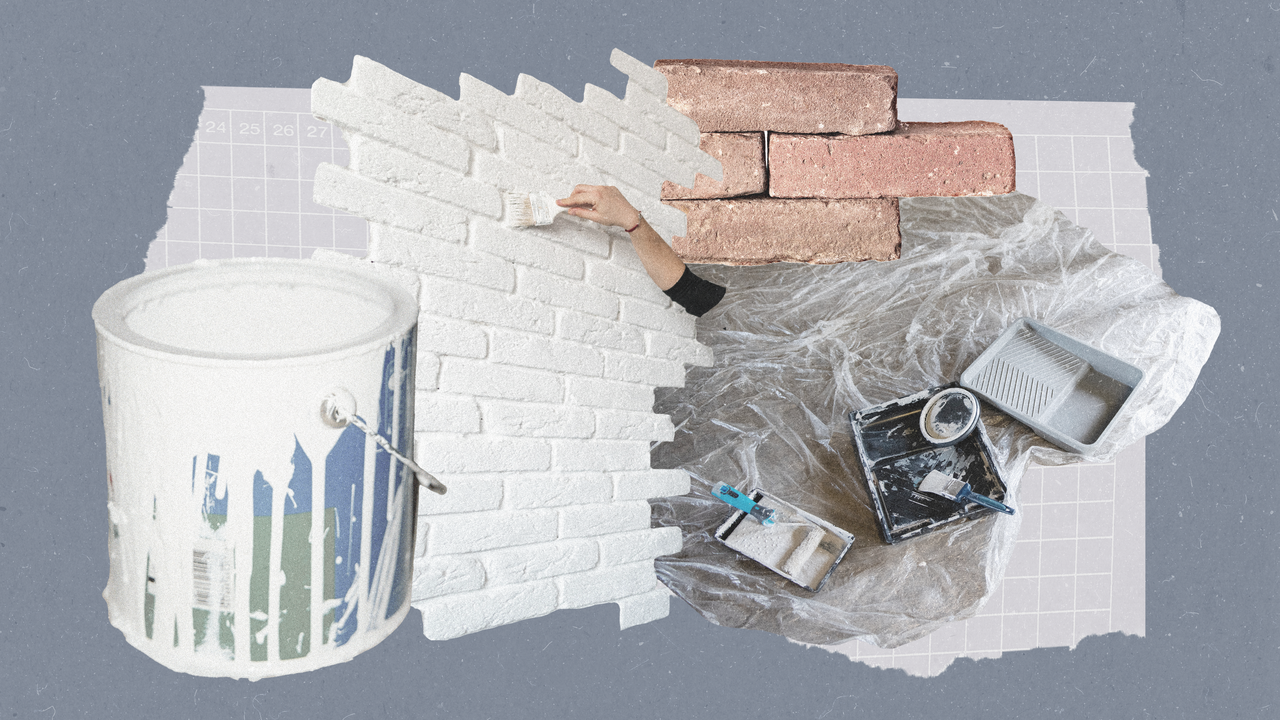Once your brick has been cleaned, you’ll want to let it dry completely for 24 hours before painting. It’s also important to check for any cracks or structural problems that may require repointing or some professional help. Tape off any areas you don’t plan to paint.
Step 2: Paint the brick
Begin by applying a latex primer to the brick. If there are areas of the brick that have been affected by efflorescence or mildew, you may need to apply multiple coats. Let the primer dry completely. Definitely don’t skip out on the coat of primer, says Ashley Saltern, director of paint product management at PPG. “Apply it with a high-quality, nylon-polyester brush.”
Be sure to pay close attention to detail here as you begin your paint job. “If you see any defects in the brick itself after priming, fill any gaps of hole with a high-quality acrylic caulk or paintable polyurethane caulk,” Saltern instructs.
Then, use your roller or brushes to apply a paint formulated for masonry, or a latex paint, to the brick. (If you’re painting the interior of a fireplace, make sure you’re using heat-proof paint.) Painting pros may find that a paint sprayer is the easiest method, but brushes and rollers made for textured surfaces also work well. Make sure to push the paint into the tiny cracks and crevices. Apply a second coat if necessary. “It’s always best to start at the top and work your way to the bottom,” Saltern advises. “Keep a rag or an extra dry brush handy to catch drips along the way.”
Not sure what paint color to choose? There is no specific route that you must take when selecting a hue for your interior brick. “It can be painted an accent color to stand out or the same as wall color for a more toned down feel,” Snouffer says. “Neutrals are always a nice option that provides a subtle change with lots of texture.”
Those who are inclined to paint brick a neutral hue will want to heed to Harrison’s recommendations. She gravitates to whites and off-whites, such as Sherwin-Williams Roman Column and Benjamin Moore Simply White, colors that will shine in living rooms, bedrooms, and dining rooms alike.
That said, be mindful that white isn’t the best paint color selection for a brick fireplace unless you’re prepared to repaint often. “If you use a fireplace that is not wood-burning, you shouldn’t fear using a stunning white,” Saltern says, noting that soot therefore won’t cause any damage.
Step 3: Get creative with these tips and tricks
Instead of painting, consider staining your brick. This method works best on brick that’s in good condition, and it allows the texture of the surface to shine because the stain absorbs into the brick rather than coating it as paint does.
- Never paint damaged or wet brick. The surface should always be clean, dry, and in good condition before painting, otherwise the process can cause more damage.
- When cleaning your brick before painting, never use acidic cleansers. They will affect the final paint job.
- Remove your painter’s tape before your finished area dries, but don’t move furniture back near the wall right away. Saltern recommends waiting one to two days after the area dries before doing so.









